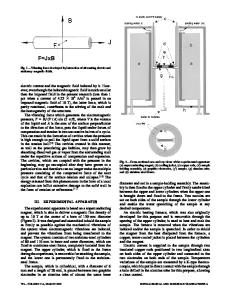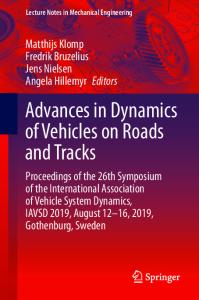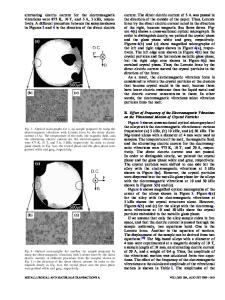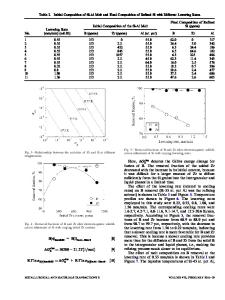Structural refinement of gray iron by electromagnetic vibrations
- PDF / 5,461,969 Bytes
- 6 Pages / 612 x 792 pts (letter) Page_size
- 15 Downloads / 300 Views
I. INTRODUCTION
MICROSTRUCTURAL refinement of cast iron, which applies to both the primary grains and the eutecticcell structure, has been of particular interest to researchers because of the fact that it directly affects mechanical properties, such as fracture toughness[1] and ultimate tensile strength,[2,3] of the finished products. This has resulted to the introduction of many different refining methods. Among these methods, the addition of specific amounts of an inoculating agent to the melt,[4,5] the controlling of the cooling rate by use of chills during solidification,[6,7] the heat treatment or thermomechanical treatment of the cast product,[8,9] and a number of their combinations are well established. Also, as to the other techniques recently introduced, semisolid processing,[10] electromagnetic stirring during solidification,[11,12] and inducing ultrasonic vibrations in the molten metal pool by use of an immersed horn[13] can be mentioned. The biological and chemical fields of technology have been benefiting from the cavitation phenomenon produced by ultrasonic vibrations and its spectacular disruptive effects in different forms.[14] On the other hand, the field of metallurgy has been almost deprived from this because of the difficulties arising from the implementation of ultrasonic devices at high temperatures, the erosion of the immersed horn, and, therefore, the contamination of the product. However, this obstacle can be removed by using electromagnetic vibrations produced by simultaneous application of alternating electric and stationary magnetic fields, which can be induced in the molten metal in a contactless manner.
ALIREZA RADJAI, Advanced Materials Processing Research Scientist, Japan Society for the Promotion of Science, and KENJI MIWA, Principal Research Scientist, are with the National Institute of Advanced Industrial Science and Technology, Moriyama-ku Nagoya 463-8560, Japan. Contact e-mail: [email protected] Manuscript submitted February 13, 2001. METALLURGICAL AND MATERIALS TRANSACTIONS A
In the last two decades, the adoption of different combinations of electric and magnetic fields, stationary and alternating, for various metallurgical purposes, including structural refinement, has been widely researched and practiced.[15,16,17] Certain combinations of these fields are able to induce electromagnetic forces acting as powerful vibrating forces in the melt, which can affect the solidification microstructure on a microscopic scale. In a recent work, Vives studied the effects of electromagnetic vibrations induced by the interaction of alternating electric and stationary magnetic fields during solidification of aluminum alloys and reported considerable structural refinements as a result of the cavitation phenomenon.[18] In a previous work,[19] the authors investigated the effects of electromagnetic vibrations in an hypereutectic Al-Si alloy containing suspended silicon particles and observed a considerable decrease in size and increase in number of the suspended particles when subjected to
Data Loading...











